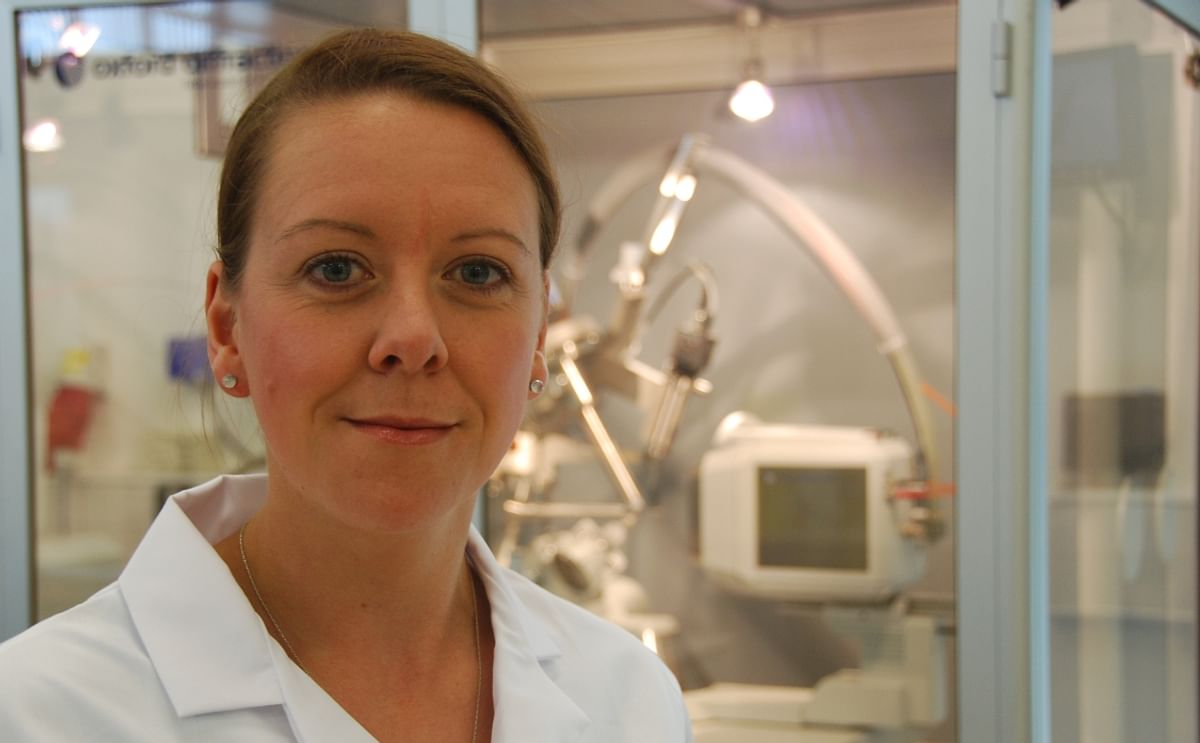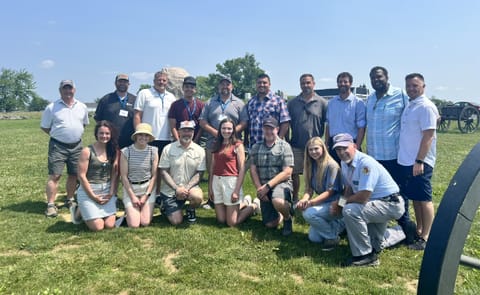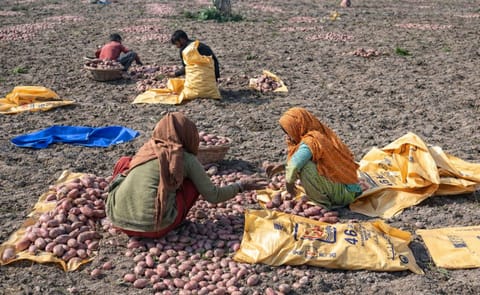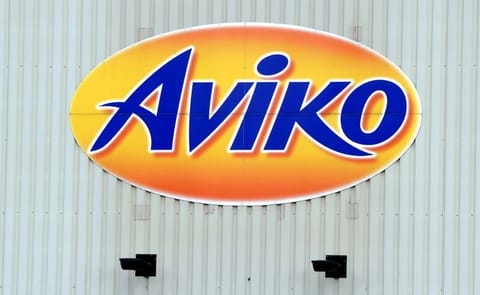Karen Davies, of the School of Science and Technology at Nottingham Trent University is working on a PhD project partially funded by the AHDB (AHDB project 115R481 - PhD micronutrient fortification of potato crops)
Potato fertilization with (Fe) nanoparticles may benefit cultivation and increase nutritional value

Work to make potatoes more nutritious by including nanoparticles in the fertilizer formulation is proving promising, according to the AHDB-funded researcher Karen Davies.
Trials applying nanoparticle formulations of iron and calcium to potatoes have not only improved the uptake of those elements – they have led to earlier flowering, brought harvest forward by two weeks, produced more uniform tubers and raised yields and dry matters, according to Karen Davies, of the School of Science and Technology at Nottingham Trent University.
In five trials yields were raised by 22-25%, dry matter content was increased by 5%, and the iron content was lifted by 5%, she says.
Nanoparticles are tiny – less than 100 nanometers in size (a thousand times less a human hair’s width) - but they have considerable potential in crop production, adds Ms Davies who is working on a PhD project (AHDB project 115R481 - PhD micronutrient fortification of potato crops).
Karen Davies:
Her supervisor Dr Gareth Cave has developed a machine able to produce high outputs of nanoparticles, up to 1kg/hour, making a fertiliser approach potentially viable.
Karen Davies:
Trials applying nanoparticle formulations of iron and calcium to potatoes have not only improved the uptake of those elements – they have led to earlier flowering, brought harvest forward by two weeks, produced more uniform tubers and raised yields and dry matters, according to Karen Davies, of the School of Science and Technology at Nottingham Trent University.
In five trials yields were raised by 22-25%, dry matter content was increased by 5%, and the iron content was lifted by 5%, she says.
Nanoparticles are tiny – less than 100 nanometers in size (a thousand times less a human hair’s width) - but they have considerable potential in crop production, adds Ms Davies who is working on a PhD project (AHDB project 115R481 - PhD micronutrient fortification of potato crops).
Karen Davies:
“Dietary anaemia is a huge problem, affecting 46% of people globally, and 25% in the UK. Potatoes are naturally high in iron, with a typical portion supplying as much as two portions of beef steak.Most soils contain plenty of iron but it is poorly available to plants, and chelated iron fertilisers are costly and offer only limited benefits, she says.
Fortified potatoes could be a low cost, safe way of providing 100% of our dietary nutritional requirement.”
Her supervisor Dr Gareth Cave has developed a machine able to produce high outputs of nanoparticles, up to 1kg/hour, making a fertiliser approach potentially viable.
Karen Davies:
“The use of nanoparticles is controversial.”
“But nanoparticles are all around us in the air we breathe – in dust and some pollen particles to foods such as cornflour and icing sugar.”
“The iron oxide liquid [iron III/II] plant feed which I use should be commercially available as a home and garden product in September.”
“Iron [III] binds tightly to the soil unlike iron [II] found in commercial Fe-EDTA and other forms of chelated iron.”
“I’ve carried out a number of toxicity studies and found the iron [III/II] nanoparticles decrease leaching through the soil strata, stay in the top 15cm of soil and gather around the roots, thus reducing contamination of surrounding watercourses and untreated land.”
¿Te gustaría recibir noticias como esta por correo electrónico? ¡Únete y suscríbete!
Get the latest potato industry news straight to your WhatsApp. Join the PotatoPro WhatsApp Community!
Empresa Destacada
Contenido Patrocinado
Contenido Patrocinado
Contenido Patrocinado
Contenido Patrocinado










